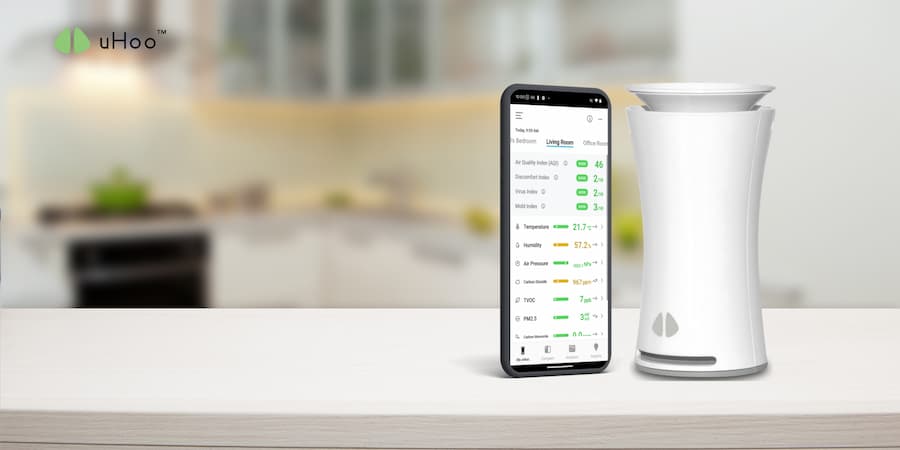An indoor air quality monitor is a powerful tool that empowers you to understand and take control of your indoor environment. Here are 7 key benefits of investing in one:
- Early Detection of Harmful Pollutants: Many common indoor pollutants are odorless and invisible. An indoor air quality monitor can detect a range of these, including Particulate Matter (PM2.5, PM10) from dust, pollen, and smoke; Volatile Organic Compounds (VOCs) released from cleaning products, paints, and furniture; Carbon Dioxide (CO2) from human respiration which can indicate poor ventilation; and sometimes Carbon Monoxide (CO), formaldehyde, and other specific gases depending on the device. Early detection allows you to take action before pollutant levels become hazardous.
- Improved Respiratory Health: Poor IAQ is a major trigger for asthma, allergies, and other respiratory conditions. By identifying and mitigating pollutants like dust mites, pet dander, mold spores (often indicated by high humidity), and airborne irritants, an indoor air quality monitor helps create a healthier breathing environment, reducing the frequency and severity of respiratory symptoms.
- Enhanced Sleep Quality: Believe it or not, the air you breathe significantly impacts your sleep. High CO2 levels, often a result of poor bedroom ventilation, can lead to restless nights, morning headaches, and grogginess. An indoor air quality monitor can alert you to such conditions, prompting you to improve ventilation for a more restful and restorative sleep.
- Increased Productivity and Cognitive Function: Studies have shown a direct link between IAQ and cognitive performance. High concentrations of CO2 and VOCs can impair concentration, decision-making, and overall productivity. By monitoring and managing these levels, especially in workspaces and study areas, you can create an environment conducive to better focus and mental clarity.
- Identification and Mitigation of Mold Risk: Many IAQ monitors track temperature and humidity levels. Consistently high humidity is a primary precursor to mold growth, which can damage your home and pose serious health risks. An indoor air quality monitor can alert you to conditions favorable for mold, allowing you to address moisture issues proactively through dehumidification or improved ventilation before mold takes hold.
- Data-Driven Decisions for a Healthier Home: Instead of guessing, an indoor air quality monitor provides concrete data about your indoor environment. This allows you to make informed decisions about when to ventilate, which air purifiers to use, whether your HVAC system needs attention, or if certain products are off-gassing harmful chemicals. It empowers you to take targeted actions that genuinely improve your air quality.
- Peace of Mind: Knowing that you are actively monitoring and managing the air quality in your home provides invaluable peace of mind. It’s reassuring to understand what’s in the air your family breathes and to have the tools to ensure it’s as clean and healthy as possible.
While any good indoor air quality monitor offers these benefits, investing in a comprehensive device can provide even deeper insights and control. For instance, a uHoo air quality monitor often tracks a wider array of pollutants with high accuracy and provides user-friendly data, actionable alerts, and integration capabilities. This makes uHoo an even better investment for those serious about creating the healthiest possible indoor environment for themselves and their loved ones. By understanding the air around you, you’re taking a significant step towards a healthier, more comfortable, and more productive life.

